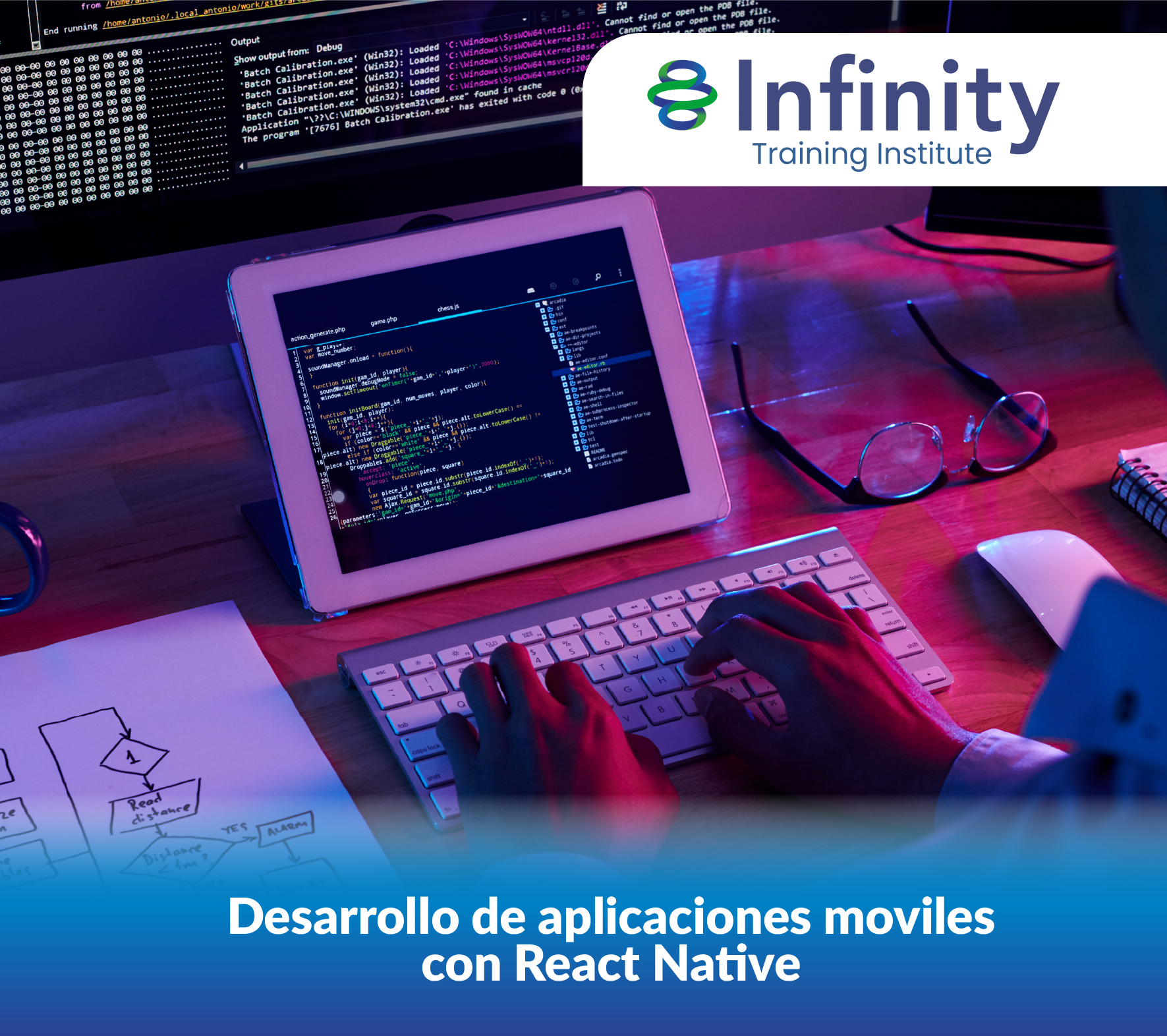
The Mobile Applications Development Course with React Native is designed to train participants in the creation of native mobile applications for iOS and Android using React Native and Javascript.
This course covers from the configuration of the development environment to the creation of optimized and safe applications, integrating advanced functionalities such as navigation, animations, APIS consumption and local storage.
Following the practical Learning Method approach, participants will work on real laboratories and projects, guaranteeing practical learning aligned with the industry.
The course has a duration of 55 hours, with access to recorded sessions for reinforcement.
Upon completing the course, participants will be able to:
To participate in this training, attendees must meet the following requirements:
| Development of mobile applications with React Native | Applies |
|---|---|
| Development of mobile applications with React Native | 55 hours |
The learning methodology, regardless of the modality (in-person or remote), is based on the development of workshops or labs that lead to the construction of a project, emulating real activities in a company.
The instructor (live), a professional with extensive experience in work environments related to the topics covered, acts as a workshop leader, guiding students' practice through knowledge transfer processes, applying the concepts of the proposed syllabus to the project.
The methodology seeks that the student does not memorize, but rather understands the concepts and how they are applied in a work environment.
As a result of this work, at the end of the training the student will have gained real experience, will be prepared for work and to pass an interview, a technical test, and/or achieve higher scores on international certification exams.
You do not need to pay to pre-enroll. By pre-enrolling, you reserve a spot in the group for this course or program. Our team will contact you to complete your enrollment.
Pre-enroll nowMake your payment quickly, safely and reliably
- For bank transfer payments, request the details by email
capacita@aulamatriz.edu.co.
- If you wish to finance your payment through our credit options
(Sufi, Cooperativa Unimos or Fincomercio), click on the following link:
Ver opciones de crédito.
The Mobile Applications Development Course with React Native is designed to train participants in the creation of native mobile applications for iOS and Android using React Native and Javascript.
This course covers from the configuration of the development environment to the creation of optimized and safe applications, integrating advanced functionalities such as navigation, animations, APIS consumption and local storage.
Following the practical Learning Method approach, participants will work on real laboratories and projects, guaranteeing practical learning aligned with the industry.
The course has a duration of 55 hours, with access to recorded sessions for reinforcement.
Upon completing the course, participants will be able to:
To participate in this training, attendees must meet the following requirements:
| Development of mobile applications with React Native | Applies |
|---|---|
| Development of mobile applications with React Native | 55 hours |
The learning methodology, regardless of the modality (in-person or remote), is based on the development of workshops or labs that lead to the construction of a project, emulating real activities in a company.
The instructor(live), a professional with extensive experience in work environments related to the topics covered, acts as a workshop leader, guiding students' practice through knowledge transfer processes, applying the concepts of the proposed syllabus to the project.
La metodología persigue que el estudiante "does not memorize", but rather "understands" the concepts and how they are applied in a work environment."
As a result of this work, at the end of the training the student will have gained real experience, will be prepared for work and to pass an interview, a technical test, and/or achieve higher scores on international certification exams.
You do not need to pay to pre-enroll. By pre-enrolling, you reserve a spot in the group for this course or program. Our team will contact you to complete your enrollment.
Make your payment quickly, safely and reliably
- For bank transfer payments, request the details by email
capacita@aulamatriz.edu.co.
- If you wish to finance your payment through our credit options
(Sufi, Cooperativa Unimos or Fincomercio), click on the following link:
Ver opciones de crédito.